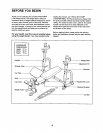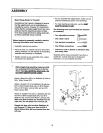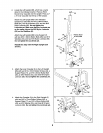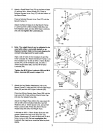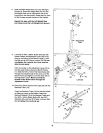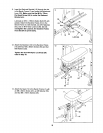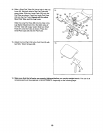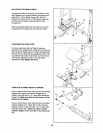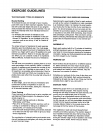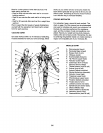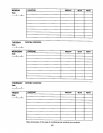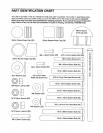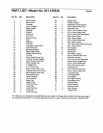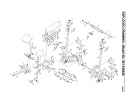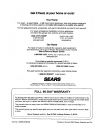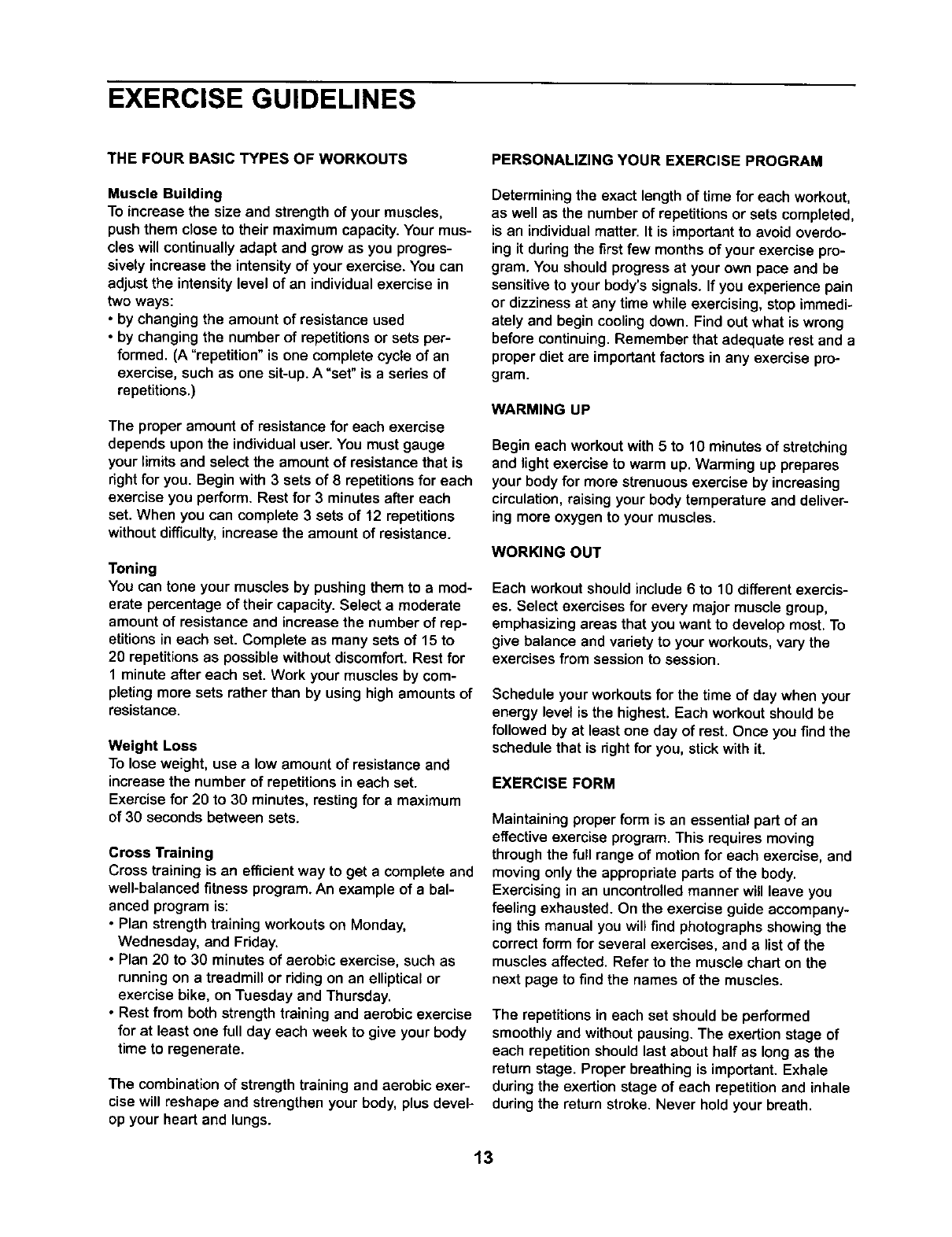
EXERCISE GUIDELINES
THE FOUR BASIC TYPES OF WORKOUTS
Muscle Building
To increasethe size and strength ofyour muscles,
pushthem close to their maximum capacity.Your mus-
cleswill continuallyadaptand grow as you progres-
sively increasethe intensityof yourexercise. You can
adjustthe intensitylevel ofan individualexemise in
two ways:
• by changingthe amount ofresistanceused
• by changingthe number of repetitionsor sets per-
formed. (A"repetition"is one completecycle of an
exercise, such as one sit-up.A "set" is a series of
repetitions.)
The proper amountof resistanceforeach exercise
depends uponthe individualuser.You mustgauge
your limitsand selectthe amountof resistancethat is
rightfor you. Beginwith 3 sets of 8 repetitionsfor each
exercise you perform.Rest for 3 minutesafter each
set. When you can complete3 sets of 12 repetitions
withoutdifficulty,increasethe amount of resistance.
Toning
You can tone your musclesby pushing them to a mod-
erate percentage oftheir capacity.Selecta moderate
amountof resistanceand increasethe numberof rep-
etitionsin each set. Complete as many sets of 15 to
20 repetitionsas possiblewithoutdiscomfort.Rest for
1 minuteafter each set. Work yourmuscles bycom-
pletingmore sets rather than by usinghigh amountsof
resistance.
Weight Loss
To loseweight, use a low amount of resistanceand
increasethe number ofrepetitionsin each set.
Exercise for 20 to 30 minutes, restingfor a maximum
of30 secondsbetween sets.
Cross Training
Cross training is an efficient way toget a completeand
well-balanced fitness program.An example of a bal-
anced program is:
• Plan strengthtraining workoutson Monday,
Wednesday, and Friday.
• Plan 20 to 30 minutesofaerobic exercise,such as
runningon a treadmillor ridingon an ellipticalor
exercise bike, on Tuesday and Thursday.
• Rest from bothstrengthtraining and aerobicexercise
for at leastone full day each week to give yourbody
time to regenerate.
The combinationof strengthtrainingand aerobicexer-
cisewill reshape and strengthenyour body, plusdevel-
op your heart and lungs.
PERSONALIZING YOUR EXERCISE PROGRAM
Determiningthe exact lengthof time for each workout,
as well as the number of repetitions or sets completed,
is an individual matter. It is important to avoid overdo-
ing it during the first few months of your exercise pro-
gram. You should progress at your own pace and be
sensitive to your body's signals. If you experience pain
or dizziness at any time while exercising, stop immedi-
ately and begin cooling down. Find out what is wrong
before continuing. Remember that adequate rest and a
proper diet are important factors in any exercise pro-
gram.
WARMING UP
Begin each workoutwith 5 to 10 minutesof stretching
and light exercise to warm up. Warming up prepares
your body for more strenuous exercise by increasing
circulation, raising your body temperature and deliver-
ing more oxygen to your muscles.
WORKING OUT
Each workout should include 6 to 10 different exercis-
es. Select exercises for every major muscle group,
emphasizing areas that you want to develop most. To
give balance and variety to your workouts, vary the
exercises from session to session.
Schedule your workouts for the time of day when your
energy level is the highest. Each workout should be
followed by at least one day of rest. Once you find the
schedule that is right for you, stick with it.
EXERCISE FORM
Maintaining proper form is an essential part of an
effectiveexercise program. This requiresmoving
throughthe full range of motionfor each exercise, and
movingonly the appropriatepartsof the body.
Exercisingin an uncontrolledmannerwill leave you
feeling exhausted. On the exercise guide accompany-
ingthis manual you willfind photographsshowingthe
correctform for several exercises,and a listofthe
muscles affected. Refer to the musclechart on the
next page tofindthe names ofthe muscles.
The repetitions in each set should be performed
smoothly and without pausing. The exertion stage of
each repetitionshouldlastabout half as long as the
return stage. Proper breathingis important.Exhale
duringthe exertionstage ofeach repetitionand inhale
duringthe returnstroke.Never hold your breath.
13



